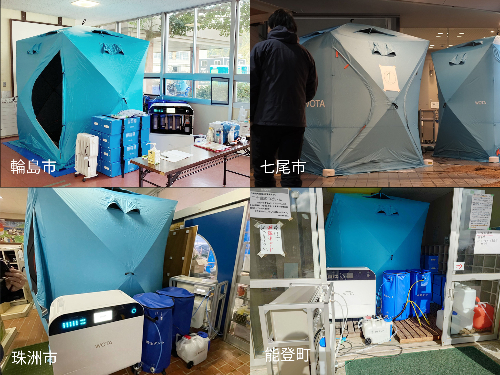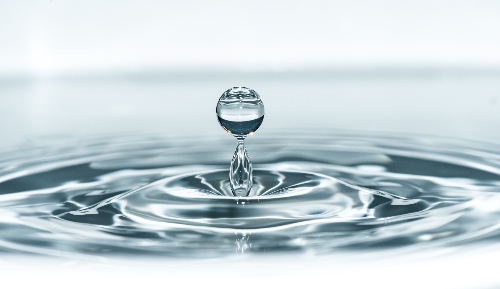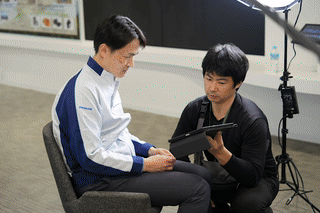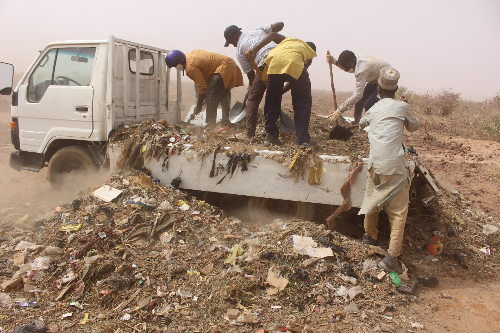JStories ー With a population of roughly 14.25 million, Tokyo ranks among the largest cities in the world. Yet, when it comes to water resources, the metropolis is far from naturally blessed. Tokyo relies heavily on rivers such as the Arakawa River, which flows through the city, and the Tone River, one of Japan’s largest, for its water supply — sources that carry a high risk of flooding during the rainy season and are vulnerable to other natural disasters.
And yet, it’s not uncommon to hear Tokyo residents claim that the city’s tap water tastes better than bottled water. As someone who moved to Tokyo from China more than one year ago, I can personally vouch for this: The water that flows straight from the faucet is not only delicious but also impressively safe.
In European cities like Vienna and Zurich, residents benefit from meltwater from the Alps — pristine and naturally filtered. Tokyo, in contrast, draws the vast majority of its water from rivers, which are more prone to issues like algae growth in summer, leading to unpleasant odors and cloudiness. In the past, these conditions often made Tokyo’s tap water less palatable.
But the Tokyo Metropolitan Government has invested heavily in modernizing its water infrastructure, building resilient systems designed to withstand disasters and supply clean water reliably and affordably. By turning a “weakness in water sources” into a driving force for innovation, the city has developed advanced purification technologies that have transformed its tap water into something rarely seen elsewhere in the world: river-sourced water that rivals — and, to many, surpasses — the taste of bottled water.

A self-purifying system that gives the water a crisp, springlike freshness
In June of this year, I visited the Higashimurayama Water Purification Plant, located at the foot of the Sayama Hills in western Tokyo. It was one of the first facilities in the city to fully implement advanced water treatment methods — a system often described as capable of turning any water into something truly delicious. There, I witnessed both the sophisticated purification process that transforms raw river water into fresh, springlike tap water, and the dedication of the people who make it possible.
Advanced water treatment is a three-step purification process that builds on conventional methods by adding ozonation and biological activated carbon filtration. This system can suppress the formation of even the most persistent impurities, including trace amounts of trihalomethanes — disinfection byproducts suspected to be toxic or carcinogenic — and can almost completely remove unpleasant odors and organic matter.
The process begins with ozonation, where powerful oxidation breaks down organic compounds and odor-causing substances. The treated water then flows through a bed of activated carbon that hosts a community of microorganisms. These stabilized microbes absorb and decompose remaining organic particles, including ammonia and metabolic byproducts from algae.
This method doesn’t rely on additional chemicals and instead mimics natural purification systems. Unlike traditional chlorine-based treatments or simple activated carbon filtration, it is effective in reducing harsh odors.
The microorganisms nestled within the tiny pores of the carbon granules play a vital role — they quite literally “eat” the odors, breaking down naturally occurring organic pollutants like fallen leaves or biological matter carried in river water. It’s a process that could be described as “water purifying itself” — not through aggressive disinfection, but through the quiet work of an invisible microbial team.
At the Higashimurayama Purification Plant, this is followed by a final filtration stage using sand, which remove any remaining fine particles, further enhancing both clarity and safety.

“Tokyo’s tap water is delicious,” says Naoki Ueno, director of customer services at the Tokyo Metropolitan Government’s Bureau of Waterworks. “It’s widely used in cooking and even in sake production. For breweries operating in Tokyo, water quality is essential — and they specifically choose tap water from the city. In many countries, the focus is still on making water drinkable. But in Japan, we’ve moved beyond that — our goal is to make it pleasant to drink. That’s a level few nations have reached.”

To support this, the city has introduced the Implementation of Tokyo High Quality Management Program (the Tokyo version of the Water Safety Plan). This framework ensures rigorous quality control and builds trust through comprehensive monitoring — from the water source all the way to the tap. In an interview with JStories, Ueno commented, “Japan is one of the few countries in the world where people can drink water straight from the tap — a unique cultural practice we are committed to preserving.”
Beyond safety, Tokyo offers clean, great-tasting water that’s enjoyable to drink — all at a low price.
In a 2016 report by a Dutch consulting firm ranking the water environments of major global cities, Tokyo placed only 25th — primarily due to its vulnerability to natural disasters and limited reservoir capacity. On the global stage, Tokyo’s water infrastructure is not always regarded as top-tier.
However, when it comes to the actual quality of drinking water, Tokyo stands out. Many Western cities that ranked higher still rely heavily on high concentrations of chlorine for disinfection. While effective in ensuring safety, this often leaves a noticeable chemical aftertaste.
Tokyo, by contrast, takes a more refined approach — prioritizing not only safety but also flavor and the overall drinking experience. The result is water that is clean, refreshing, and enjoyable — all at a low cost.
A 2018 survey conducted by the Bureau of Waterworks found that when Tokyo tap water was compared with bottled mineral water, 60% of respondents said they preferred the tap water or found it just as good.

Tokyo’s leak prevention efforts earn global recognition
Tokyo has also won international praise for curbing water leaks. In 1955, about 20 percent of its water was lost to leakage. By steadily replacing pipes with ductile cast iron, introducing stainless steel for service lines and carrying out meticulous inspections, the city has driven the rate down to among the lowest in the world.
“Compared to other major cities like London, Reykjavik, Beijing, or New York, Tokyo’s leakage rate is just 3%,” says Ueno. “In other words, only 3% of the city’s water is lost — an exceptionally low figure by global standards.”

Another defining feature of Tokyo’s water infrastructure is its remarkable stability. For instance, the city has built a “raw water interconnection” system that allows water supplies to be switched between multiple rivers. In the event that one source becomes contaminated, the system can quickly reroute supply from another — ensuring uninterrupted access to clean water.
Tokyo also began installing earthquake-resistant pipes — a technology rarely seen elsewhere in the world. “Japan experiences frequent seismic activity,” says Ueno. “To continue delivering safe, high-quality water even during disasters, we’ve introduced specially engineered piping that doesn’t dislocate during earthquakes.”
Despite these innovations, Tokyo’s water remains affordable by global standards. For a typical household using a 13-mm-diameter service pipe, the monthly base fee starts at just 860 yen, and water usage costs as little as 22 yen per cubic meter — which translates to just 0.022 yen per liter. That’s significantly cheaper than bottled water, which in Japan typically costs about 100 to 150 yen per liter.
In contrast, residential water rates in New York City range from $1 to $2 per cubic meter (approximately 150 yen to 300 yen as of July 2025), with OECD averages in a similar range — making Tokyo’s water system not only one of the most resilient, but also among the most cost-efficient in the developed world.
Disaster-Resilient, pump-free systems: Tokyo shares its water infrastructure expertise abroad
One key factor behind Tokyo’s ability to deliver high-quality water at low cost lies in its operational efficiency and optimized energy structure. At the Tokyo Metropolitan Waterworks Bureau, renewable energy accounts for about 12 percent of total energy use, with CO₂ reductions totaling 58,000 tons.
The Higashimurayama Purification Plant is one of the facilities that keeps Tokyo’s water flowing. Perched about 80 meters above sea level — an unusually high point in the city — it can use gravity, not pumps, to send treated water to some neighborhoods during a blackout, a design that strengthens the city’s defenses against disasters.

With its advanced technologies and operational know-how, Tokyo stands as one of the world’s leading cities in water management — and it has been actively sharing its expertise with other urban centers facing similar challenges.
Since the 1980s, the Tokyo Metropolitan Government’s Bureau of Waterworks has collaborated with the Japan International Cooperation Agency (JICA) to welcome more than 1,300 water professionals from over 60 countries. These training programs have covered a wide range of topics, including water quality management, energy-efficient operations, and utility administration.
Today, Tokyo’s global engagement continues to expand. The city has signed a leakage control partnership with Ahmedabad in western India, and has dispatched experts to Kigali, the capital of Rwanda, to support local water treatment plant operations. In 2024, Tokyo initiated a formal exchange with New York City, focusing on disaster resilience, energy-saving practices, and infrastructure renewal.
At first glance, Tokyo’s tap water may appear unremarkable. But each drop reflects decades of technological innovation and operational effort — a response to the city’s resource constraints, environmental pressures, and the expectations of its citizens. It may not come from mountain springs, but it embodies a different kind of purity: reliably clean, delicious water shaped by the ingenuity of an urban metropolis. And in that sense, Tokyo’s system offers a valuable model for cities around the world.
Translated by Mizuki Nakagawa | JStories
Edited by Mark Goldsmith
Top photo: Envato
For inquiries regarding this article, please contact jstories@pacificbridge.jp
***
Click here for the Japanese version of the article





![[Podcast] Japanese technology to supercharge human fertility (Part 3)](https://storage.googleapis.com/jstories-cms.appspot.com/images/1766558713084place-for-scientific-research-2025-03-07-14-08-49-utc%20(1)_bigthumbnail.jpeg)
![[Interview: Part 2] A digital approach to tackle child hunger in Japan with dignity](https://storage.googleapis.com/jstories-cms.appspot.com/images/1766130666509unnamed_bigthumbnail.jpg)
![[Podcast] Japanese technology to supercharge human fertility (Part 2)](https://storage.googleapis.com/jstories-cms.appspot.com/images/1765863548035unnamed-7_bigthumbnail.jpg)
![[Podcast] Japanese technology to supercharge human fertility (Part 1)](https://storage.googleapis.com/jstories-cms.appspot.com/images/1765440905082unnamed_bigthumbnail.jpg)
_bigthumbnail.jpeg)





![[Interview] When digital and physical worlds meet](https://storage.googleapis.com/jstories-cms.appspot.com/images/1747974430456unnamed-2_smallthumbnail.png)




_smallthumbnail.jpeg)

![[Interview: Part 1] From nourishing souls to feeding the hungry](https://storage.googleapis.com/jstories-cms.appspot.com/images/1763695595492unnamed_smallthumbnail.jpg)


what a nice story, Tokyo's water is indeed delicious
Nice coverage of an interesting and timely subject, cheers for good work.